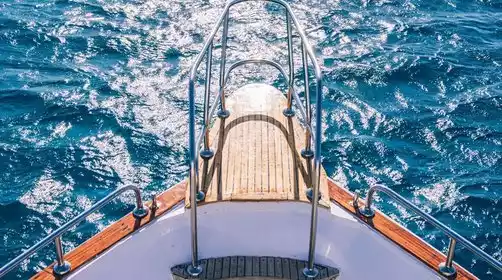Day 1: Meet at Shanghai Pudong International Airport ★Meeting day
All day
Today is the gathering day for the activity. Tourists from all over the country will gather at Shanghai Pudong International Airport (the specific time is subject to the tour book), and under the guidance of the tour leader, they will check in and prepare to fly to Cairo, the capital of Egypt.


Day 2 Shanghai → Cairo (direct flight)
All day
The last Friday of April to October 30th is the daylight saving time, and the local time is 5 hours later than Beijing time. The rest of the time, Egypt's time difference is 6 hours later than Beijing time (winter time).
In Cairo, wealth and poverty, grandeur and desolation, modern and classical religions coexist and are presented to you without any cover. You can see the densely populated Islamic buildings as well as the ancient heritage sites scattered throughout the city.
Arrive in the morning and pick up at the airport. First, visit Cairo's iconic Saladin Citadel, a fortress built by the 12th-century Egyptian hero Saladin to defend against the Crusaders. Construction began in 1176 and took full shape six years later. Also known as the Mosque of Muhammad Ali, this landmark mosque offers panoramic views of Cairo from its rooftop. In the afternoon, drive to the Old Egyptian Museum (the new building is not yet fully open, and the museum's treasure, the Golden Mask of Tutankhamun, is still in the old building. A visit to the new building is included on the last day of the tour).


Day 3 Cairo → Red Sea
All day
After breakfast at the hotel, we had the longest drive of the day, from Cairo to the Red Sea.
A beautiful coastal city on the Red Sea, with desert hinterland on one side and reefs and azure waters on the other, with seagulls soaring overhead. Sunshine shines year-round, and even in winter, the water temperature remains around 20 degrees Celsius, making it a popular diving and snorkeling destination at any time of year, a true gift from nature. However, the Red Sea isn't red; it's because of a type of algae that grows there. During certain seasons, the algae die in large numbers, turning the sea red and stained red, hence the name.
After arriving in the afternoon, you can choose the optional activity [4WD visit to the Gobi Desert, nomadic Bedouin tribe] for US$65/person (note: you can also choose to book on other platforms), or you can choose to relax and have a comfortable vacation at the hotel. It happened to be sunset, and our hotel also included all three meals and had a seaside beach!!!
Note: Ordering self-funded projects includes tour guide service commission and project fees. Guests participate on a voluntary basis and can compare on multiple platforms, but be sure to pay attention to safety.


Day 4 Red Sea
All day
After breakfast, we will arrange a special [Red Sea yacht snorkeling trip]. The Red Sea is a holiday resort, one of the world's top ten seas, and it beats any island in Southeast Asia. The best way to experience it is to go out to sea by boat. We will arrange lunch on board and snorkel along the way (life jackets/reusable snorkeling fins and masks are provided, and the rest must be provided by yourself) to see the coral reefs and fish, the rich fish and sea creatures, and even the chance to encounter dolphins!
Notice:
1. Please pay attention to safety when getting on and off the yacht. Line up in order and avoid crowding. Be careful of slippery surfaces.
2. Do not make any dangerous actions before the captain and lifeguard make arrangements. It is strictly forbidden to go into the sea without permission. You must wear a life jacket when going into the sea.
3. You must bring personal items such as bath towels and swimsuits when going out to sea. Please take good care of your important personal items.
4. Please purchase travel accident insurance in advance.
5. The four-wheel drive vehicle is quite bumpy during driving. The elderly, weak, women, children and patients should participate in the sand rush and sea activities with caution!


Day 5 Red Sea → Luxor LXR
All day
After waking naturally in the morning, you can continue enjoying our Red Sea beachfront hotel, allowing you to linger longer. Lunch will be served at a renowned local seafood restaurant, where you'll enjoy a delicious seafood feast. The local seafood soup is particularly memorable! We'll then drive to Luxor. This day's drive will be quite long, and in the evening, we'll enjoy a horse-drawn carriage tour. We'll take you on a special carriage tour of the magnificent Luxor Temple. The sight of the tall, handsome black horses and the ornately decorated carriages alone is enough to excite you! As night falls, China-TravelNote will offer a special Luxor Temple Night Tour. Some say you haven't been to Egypt without visiting Luxor Temple. The evening lights, illuminated by the lights, create a more mysterious and majestic atmosphere than during the day, allowing you to experience firsthand the splendid civilization of this ancient nation, spanning millennia.
Luxor, the plural form of the Arabic word el-upsur, el-qasr, meaning "fortress," is 675 kilometers from Cairo. When the Arabs arrived, the area was still a scene of crooked, towering columns with interlaced arches, and a series of solemn, awe-inspiring, vast, and mysterious ruins. Luxor's ancient Egyptian name was "Waset."
The ancient Greeks called it "Thebes". The ancient Nile River divided it into East Thebes and West Thebes. East Thebes was the paradise of gods and the living; West Thebes was the kingdom of the dead.


Day 6 Luxor (Tomb Raider)
All day
This morning we can choose to take advantage of the optional hot air balloon ride (US$140 per person). Note: You can also choose to order from other platforms.
Note: Ordering self-funded projects includes tour guide service commission and project fees. Guests participate on a voluntary basis and can compare on multiple platforms, but be sure to pay attention to safety.
After breakfast, we'll visit Luxor's iconic Temple of Hatshepsut and hear the story of Queen Hatshepsut. The Valley of the Kings features tombs scattered irregularly throughout the valley, carved into the hillside, their walls and ceilings covered in frescoes. In addition to the three tombs included in the standard ticket, China-TravelNote offers a complimentary entrance to Seti I, Egypt's most expensive tomb, valued at 2,000 Egyptian pounds per person. Seti I, father of the renowned pharaoh Ramses II, is the Valley's most expensive and largest tomb. From the entrance to the final chamber, the tomb measures 210 meters horizontally and descends 45 meters vertically. This massive rock-cut cavern has been transformed into a subterranean palace, its walls and ceilings covered in frescoes and ornately decorated to the point of astonishment.
Note: The ticket to the Valley of the Kings only includes the first entrance ticket, which allows you to visit 3 tombs (the tour guide will decide which one to visit based on the on-site situation). If you want to visit other tombs, you will need to pay extra and pay attention to the group gathering time. Thank you very much!
Note: Optional activities include tour guide commissions and program fees. Participation is voluntary. We cannot assess the safety or legitimacy of bookings made through Taobao or other platforms. Please understand.


Day 7 Luxor → Aswan
All day
After breakfast, we'll drive to the Temple of Karnak. This temple is the largest in ancient Egypt and the most magnificent of all Egyptian temples, a city of temples whose design and construction were inspired by its principles. More than just a temple, it is a complex of ancient Egyptian architecture encompassing sanctuaries, pavilions, pylons, and obelisks. The most striking feature of this area is its vast, forest-like, columned hall.
We will then travel to the southern Nile River city of Aswan. En route, we'll visit the Temple of Kom Ombo, a rare temple dedicated to two deities. The left gate is dedicated to Horus, the eagle god, and the right to Sobek, the crocodile god. The Crocodile Museum also features stunning crocodile mummies. Finally, we'll drive to Aswan. Upon arrival, we'll have dinner and check into our hotel.


Day 8 Aswan → Abu Simbel → Aswan
All day
The hotel packed breakfast and we will drive to Abu Simbel Temple early in the morning. It is located 280 kilometers south of Aswan, close to Sudan. People come from far and wide to see this temple for the following reasons:
1. The temple structure is extremely majestic. 2. The love story between Ramses II and his beloved woman Nefertari.
The tourists get up around 4-5 am and drive for 5 hours through the vast desert, enjoying the sunrise over the desert. They are then escorted by a special escort team to the Abu Simbel Temple at the border. After the tour, they return to Aswan for lunch and a rest.
Then at sunset we boarded a Felucca, a traditional means of transportation that has been popular on the Nile River for hundreds of years. It relies solely on the power of the wind to sail. Let us take a ride on the Felucca and wander in the clear waters of the Nile River, letting the wind carry you for a while.
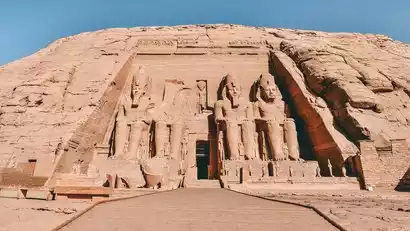
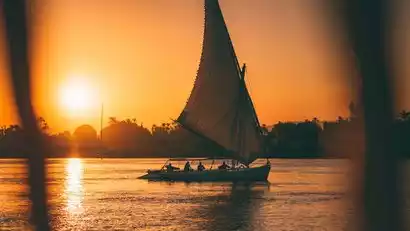
Day 9 Aswan → Cairo (domestic flights to be confirmed)
All day
After breakfast, we'll first visit the Philae Temple, the temple of Isis, the goddess of love, by boat. Built during the Ptolemaic and Roman eras of the 30th Dynasty of Ancient Egypt, its architecture blends the styles of the Pharaonic era with those of the Greco-Roman era. It consists of several sections: the Nectanibut Pavilion, the Colonnade, and the Temple of Isis.
In the afternoon, we'll visit the Nubian Village, a region in northeastern Africa where the ancient Nubians lived. Every house was painted in vibrant colors, making it feel like walking into a colorful fairytale. We'll also visit the Nubian Primary School and take a lively Arabic language class.
Then drive to the airport and fly to Cairo hotel to check in and rest.
Note: The itinerary will be adjusted according to changes in domestic flights, but the attractions will remain the same. Thank you for your understanding!!!
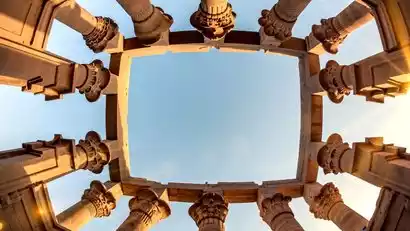
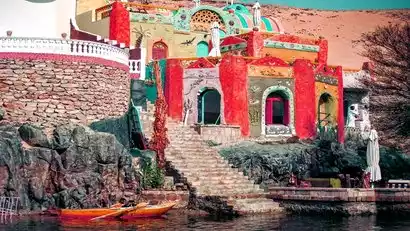
Day 10 Cairo
All day
Today will be a day packed with information! The Giza Pyramids on the Giza Plateau near Cairo, one of the Seven Wonders of the World, are a dream for many travelers to Egypt. They include the Pyramids of Khufu, Khafre, and Menkaure, as well as the mysterious Sphinx. Around 3000 BC, the initial unified state of ancient Egypt was established. Ancient Egyptian kings, also known as pharaohs, were the largest slave owners in ancient Egypt and wielded supreme power. They were considered the incarnations of gods. They built massive mausoleums for themselves, and the pyramids became symbols of their power.
At noon, China-TravelNote specially arranges a [Pyramid View Lunch]. It is not a regular restaurant but one of the seven best view restaurants on the list, where we will enjoy lunch from the perspective of the Pharaoh.
Special gift: The Grand Egyptian Museum! This afternoon, we'll head to the newly opened Grand Egyptian Museum nearby. While it's not yet fully open and is currently undergoing trial operations, it took at least 20 years to prepare and cost $1 billion USD. With over 100,000 artifacts, from the "Statue of Ramses II" to the "Solar Boat of Khufu," it boasts a wealth of collections and treasures never before exhibited. The museum itself is truly a marvel.
Note 1: The Grand Egyptian Museum will be closed for about three weeks from October 15 to November 3, 2025. The 10.25 batch will not be able to visit and the free items will be cancelled. Please understand!
Note 2: Due to the gift of the Grand Egyptian Museum, the itinerary for this day is relatively tight. You need to hurry up to go shopping in Khalili, or you can choose to buy souvenirs along the way!
In the evening, head to Souk El-Khalili to experience a unique take on the Egyptian street life. For Egyptians, the long evenings are just the beginning of nightlife. Locals boast that Café Faisalwi, even more representative of Cairo than the pyramids, has been packed every day since 1773, except during Ramadan. This old, mirrored cafe is perpetually buzzing with the air and bustling with customers from afternoon until the early hours. A regular patron of this cafe, the renowned Nobel Prize winner for literature, Naguib Mahfouz, once found countless inspiration there, writing a trilogy that would captivate the world.
Then drive to the airport to return home
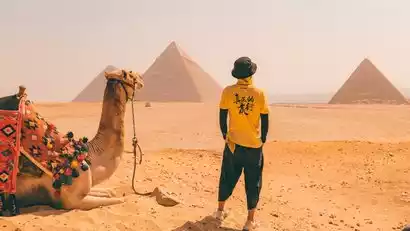
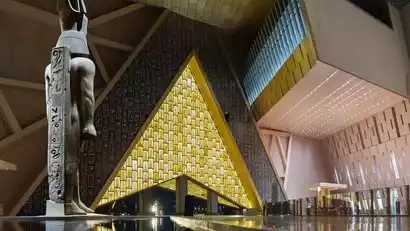
Day 11 Cairo → Shanghai
All day
We flew to Shanghai Pudong International Airport on EgyptAir, concluding our delightful journey through Egypt's mystical world. The tourists said goodbye with tearful kisses! Remember to return and hand in your homework!




